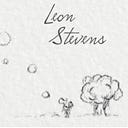Music Monday: Opus 4-Writing it Down
When I started my musical education journey, I didn’t have the advantages of computer transcription programs. There was no easy access to popular sheet music. Other that a few guitar magazines, if I wanted to learn a song, I had to get a recording and learn it by ear. That’s not an altogether bad thing — it’s a skill that is indispensable. And that wasn’t that long ago. Unless you think 40 years is a long time (it’s not. Really.)
When I decided to do my post-secondary education in music, one of my first required purchases was a calligraphy pen. Thankfully, not the feather dipped in ink kind. I’m not that old. We studied older manuscripts, practiced our musical notations, and practiced some more. Take a look at a handwritten musical score and see how much artistic skill is required.
The ink was just the final step though. You don’t want to be writing down rough drafts in permanency. I do suspect that the early composers did. No, for the majority of the time, a pencil — and eraser — are your best friends. If I had to choose, it would be the eraser (sorry, pencil).
Playing and writing are alternating tasks. Play a bit, write a bit, play a bit, erase a bit, and so on. Besides writing down the note’s pitch, you also have to figure out the complicated rhythm you just came up with. Enter the foot tapping. One and-a two-e and…Nope. One and two and-a…One-e and-a, and so on.
Of course, most of the time you know the rhythm; it’s those parts that make your piece sound cool that always give you trouble.
As I mentioned in the previous post, I have to make sure I don’t play to much, otherwise I forget the first part. That means I’ll write things down in short sections as I come up with it, and then connect the dots so to speak. If I’m having difficulty deciding where the melody will go, I often jump ahead and try to join them up later. Which leads me to a piece of paper that looks like this:
Eventually, I’ll have a complete handwritten piece ready for the final task. No more ink and splotches, dreading making a mistake (but I don’t want to start over!). Now there are many different computer transcription programs for that. They range from free to not so free to really expensive. I’ve used Finale, Encore, Sibelius, MuseScore, to name a few. I don’t write enough to warrant forking out the big bucks, so I am currently using the free program MuseScore.
I liked Encore, it was very user friendly and easy to learn, but it was glitchy and the price kept going up. MuseScore has a polished end-result, but it’s has some issues, mainly not being as straight forward as I think it could be.
My book, Journeys: Eight Original Pieces for Classical Guitar was put together using Encore, but at some point, I would like to transcribe them into a different program. I don’t want to have to key in everything again, so I need to find a way to convert one program to the other.
-Leon
Part 5: Completing the Composition
Leon Stevens is a composer, artist, and author of three books (so far): Lines by Leon: Poems, Prose, and Pictures, The Knot at the End of the Rope and Other Short Stories, and Journeys: Eight Original Pieces for Classical Guitar
